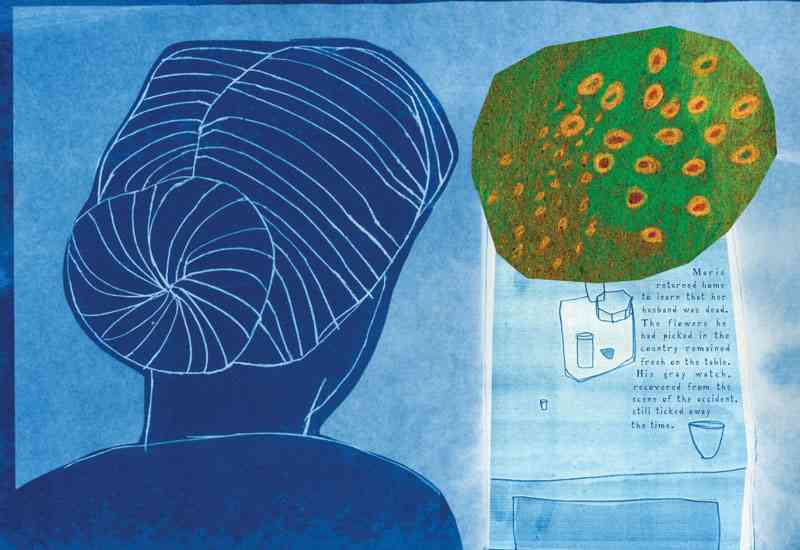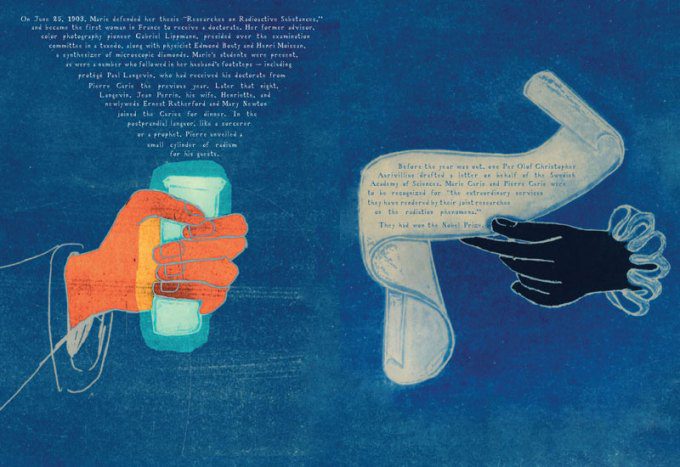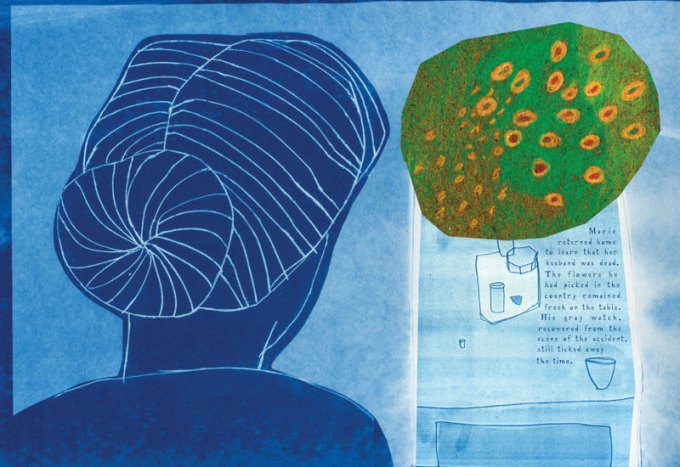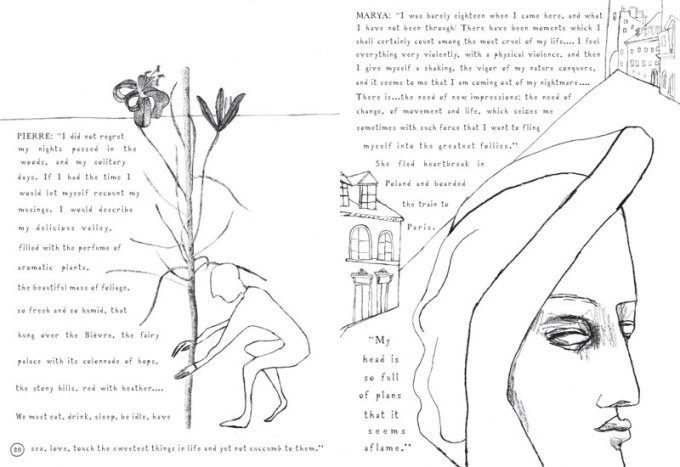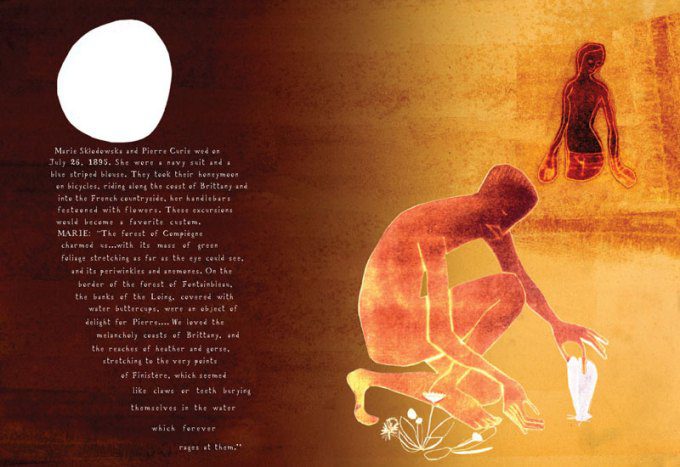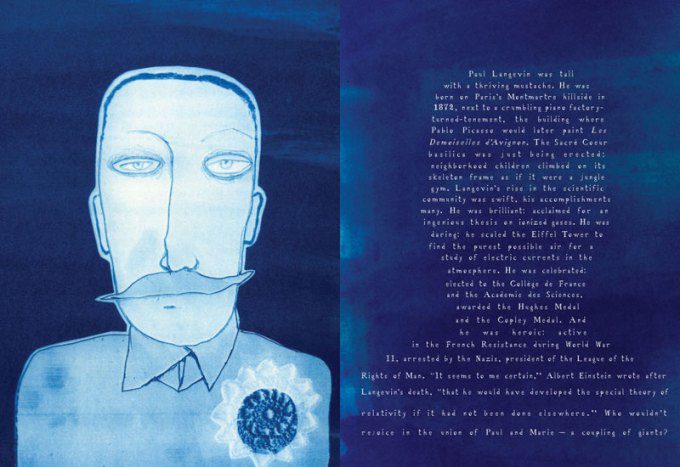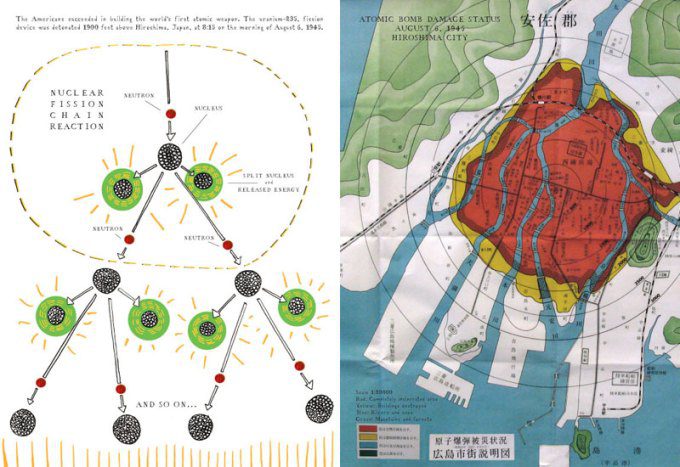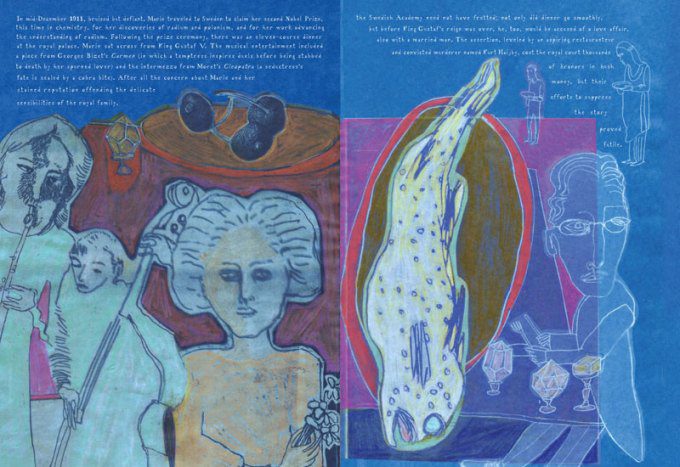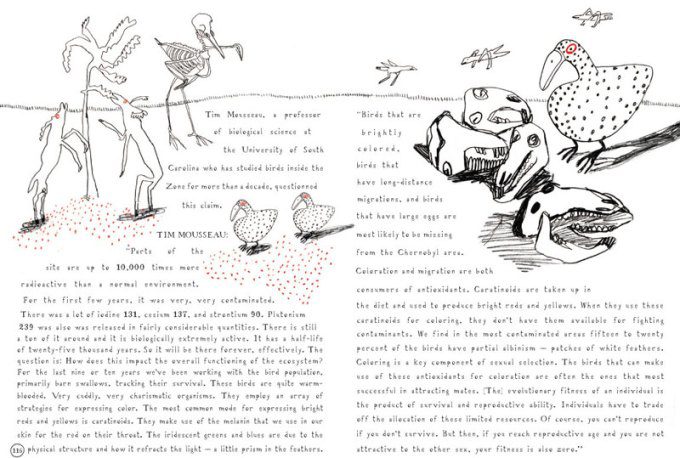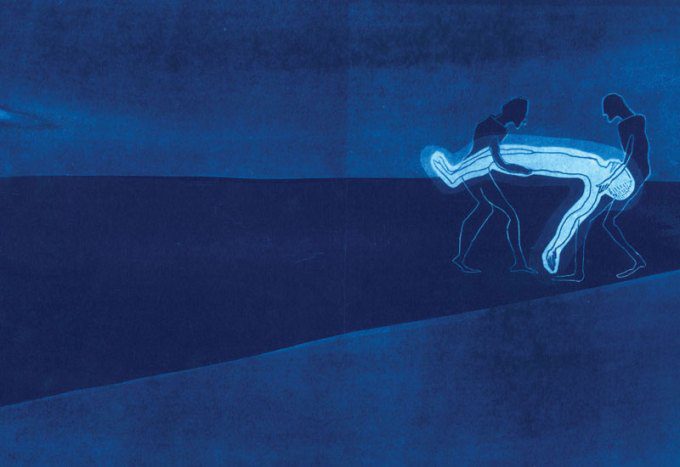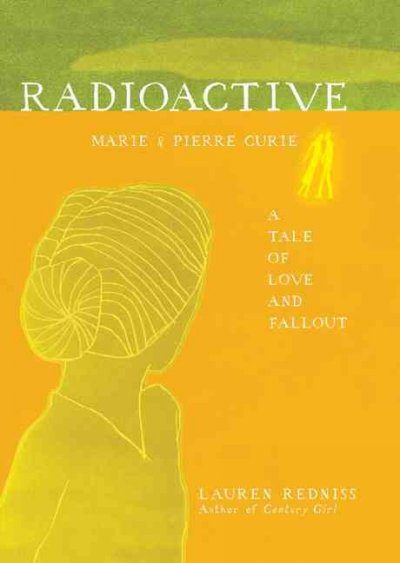 Marie Curie (November 7, 1867–July 4, 1934) is one of the most extraordinary figures in the history of science. A pioneer in researching radioactivity, a field the very name for which she coined, she was not only the first woman to win a Nobel Prize but also the first person to win two Nobel Prizes, and in two different sciences at that, chemistry and physics. In Radioactive: Marie & Pierre Curie: A Tale of Love and Fallout (public library), artist Lauren Redniss tells the story of Curie through the two invisible but immensely powerful forces that guided her life: Radioactivity and love. It’s a turbulent story — a passionate romance with Pierre Curie (honeymoon on bicycles!), the epic discovery of radium and polonium, Pierre’s sudden death in a freak accident in 1906, Marie’s affair with physicist Paul Langevin, her coveted second Noble Prize — under which lie poignant reflections on the implications of Curie’s work more than a century later as we face ethically polarized issues like nuclear energy, radiation therapy in medicine, nuclear weapons and more.
Marie Curie (November 7, 1867–July 4, 1934) is one of the most extraordinary figures in the history of science. A pioneer in researching radioactivity, a field the very name for which she coined, she was not only the first woman to win a Nobel Prize but also the first person to win two Nobel Prizes, and in two different sciences at that, chemistry and physics. In Radioactive: Marie & Pierre Curie: A Tale of Love and Fallout (public library), artist Lauren Redniss tells the story of Curie through the two invisible but immensely powerful forces that guided her life: Radioactivity and love. It’s a turbulent story — a passionate romance with Pierre Curie (honeymoon on bicycles!), the epic discovery of radium and polonium, Pierre’s sudden death in a freak accident in 1906, Marie’s affair with physicist Paul Langevin, her coveted second Noble Prize — under which lie poignant reflections on the implications of Curie’s work more than a century later as we face ethically polarized issues like nuclear energy, radiation therapy in medicine, nuclear weapons and more.
Most remarkable of all, however, is the thoughtfulness with which Redniss tailored her medium to her message, turning the book into a work of art in and of itself, every detail meticulously moulded to fit the essence of the narrative.
To stay true to Curie’s spirit and legacy, Redniss rendered her poetic artwork in an early-20th-century image printing process called cyanotype, critical to the discovery of both X-rays and radioactivity itself — a cameraless photographic technique in which paper is coated with light-sensitive chemicals. Once exposed to the sun’s UV rays, this chemically-treated paper turns a deep blue color. The text in the book is a unique typeface Redniss designed using the title pages of 18th- and 19th-century manuscripts from the New York Public Library archive. She named it Eusapia LR, for the croquet-playing, sexually ravenous Italian Spiritualist medium whose séances the Curies used to attend. The book’s cover is printed in glow-in-the-dark ink.
Watch an endearingly nervous Redniss tell the story of her book and her creative process in this talk from the recent TEDxEast:
Stunningly beautiful in both concept and execution, Radioactive is a rare cross-pollination of art and science, the kind of storytelling that makes us care about stories. Complement it with the illustrated story of how Jane Goodall turned her childhood dream into reality.


